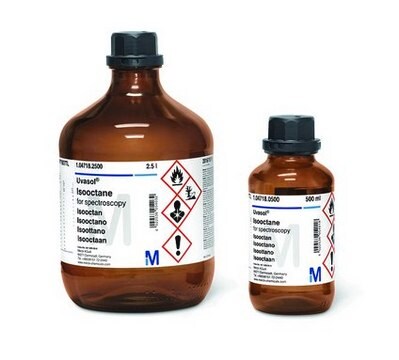180173
Kohlenstoffdisulfid
ACS reagent, ≥99.9%
About This Item
Empfohlene Produkte
Qualität
ACS reagent
Qualitätsniveau
Dampfdichte
2.67 (vs air)
Dampfdruck
5.83 psi
Assay
≥99.9%
Form
liquid
Selbstzündungstemp.
212 °F
Expl.-Gr.
50 %
Verunreinigungen
H2S, passes test (lim. ~1.5 ppm)
SO2, passes test (lim ~2.5 ppm)
≤0.05% water
Abdampfrückstand
≤0.002%
Farbe
APHA: ≤10
Brechungsindex
n20/D 1.627 (lit.)
bp
46 °C (lit.)
mp (Schmelzpunkt)
−112-−111 °C (lit.)
Dichte
1.266 g/mL at 25 °C (lit.)
SMILES String
S=C=S
InChI
1S/CS2/c2-1-3
InChIKey
QGJOPFRUJISHPQ-UHFFFAOYSA-N
Suchen Sie nach ähnlichen Produkten? Aufrufen Leitfaden zum Produktvergleich
Verwandte Kategorien
Allgemeine Beschreibung
Anwendung
It may be used in the preparation of dibenzyl trithiocarbonate, a RAFT (Reversible Addition-Fragmentation Transfer) chain-transfer agent (CTA). It may be employed as a solvent in the preparation of benzyl chlorodithioformate.
Verpackung
Ähnliches Produkt
Signalwort
Danger
Gefahreneinstufungen
Acute Tox. 4 Inhalation - Eye Irrit. 2 - Flam. Liq. 2 - Repr. 2 - Skin Irrit. 2 - STOT RE 1
Zielorgane
Peripheral nervous system,Central nervous system,Cardio-vascular system,Eyes
Lagerklassenschlüssel
3 - Flammable liquids
WGK
WGK 2
Flammpunkt (°F)
-22.0 °F - closed cup
Flammpunkt (°C)
-30 °C - closed cup
Analysenzertifikate (COA)
Suchen Sie nach Analysenzertifikate (COA), indem Sie die Lot-/Chargennummer des Produkts eingeben. Lot- und Chargennummern sind auf dem Produktetikett hinter den Wörtern ‘Lot’ oder ‘Batch’ (Lot oder Charge) zu finden.
Besitzen Sie dieses Produkt bereits?
In der Dokumentenbibliothek finden Sie die Dokumentation zu den Produkten, die Sie kürzlich erworben haben.
Unser Team von Wissenschaftlern verfügt über Erfahrung in allen Forschungsbereichen einschließlich Life Science, Materialwissenschaften, chemischer Synthese, Chromatographie, Analytik und vielen mehr..
Setzen Sie sich mit dem technischen Dienst in Verbindung.







